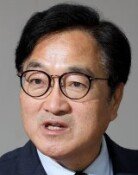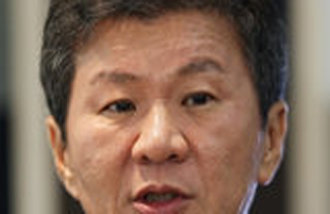[Opinion] Seating Arrangements: A Delicate Art
[Opinion] Seating Arrangements: A Delicate Art
Posted January. 07, 2006 03:00,
Former President Chun Doo-hwan barely survived a terror attack mounted by North Korea during his visit to Myanmar in 1983 because he arrived in the Aung San National Cemetery eight minutes late. When his master of ceremonies showed up five minutes late in the run up to his departure, Chun became upset and stayed in his room for three more minutes.
In other words, the mistake by the ceremonial officer can be said to have saved the life of the president.
Yet, it is the arrangement of seats that matters most in a ceremony. In fact, it is different from passing over a mistake made by a novice president in the fastidious world of diplomatic protocol.
At the New Years Party hosted by Cheong Wa Dae on January 3, the president of the Constitutional Court, Yun Yeong-cheol, and all of its eight judges were absent from the occasion. The Constitutional Court raised a long-held complaint about the ceremony, saying, Cheong Wa Dae put the president of the Constitutional Court behind the Prime Ministers seat. The complaint stemmed from the arrangement of seats which placed the Speaker of the National Assembly, whose protocol rank is No.2, and that of the Prime Minister, No.4, on the right side of the president at center, while placing the seats for the Chief Justice of the Supreme Court, ranked No. 3, and the president of the Constitutional Court, ranked No. 5, on the presidents left.
The reason for their discontent is that the Constitutional Court is a constitutional institution, and Clause 46 Article 3 of National Assembly law stipulates the correct protocol order is the Chief Justice of the Supreme Court, the president of the Constitutional Court, and the prime minister.
Yet, Cheong Wa Dae refuted the view that the prime minister receives a special treatment because he has actual power, and said it complies with customary protocol at events where all three key figures are invited.
The logic behind the suggestion is that the prime minister is not subordinate to the president, the head of state, but that the prime minister is in charge of the Cabinet on behalf of president.
Moreover, Cheong Wa Dae insists that the Constitutional Court comes first in terms of the order of delivering speeches, but the court does not accept that argument.
Some people involved with the Constitutional Court even interpret the situation as an attempt to reduce the status of the Constitutional Court, citing the presidential dinner party to which the president of the court was not invited right after the Constitutional Court ruled the governments Administrative Capital Law was unconstitutional.
Many people call the protocol team at the Ministry of Government Administration and Home Affairs to ask how it arranges the seats of lawmakers and governors for a ceremony. The answer is it depends on the nature of the event, and the seats can be arranged voluntarily based on the relevance of the event.
There is one more caution to being so careful not to be negligent in courtesy. Unlike North Korea, where the order of power is made public, a democratic nation is not supposed to have such a rigid order. But it is not an easy task to guess at seating order, given that position, level, and salary are just a few of the criteria for determining it.
Hong Kwon-hee, Editorial Writer, konihong@donga.com






